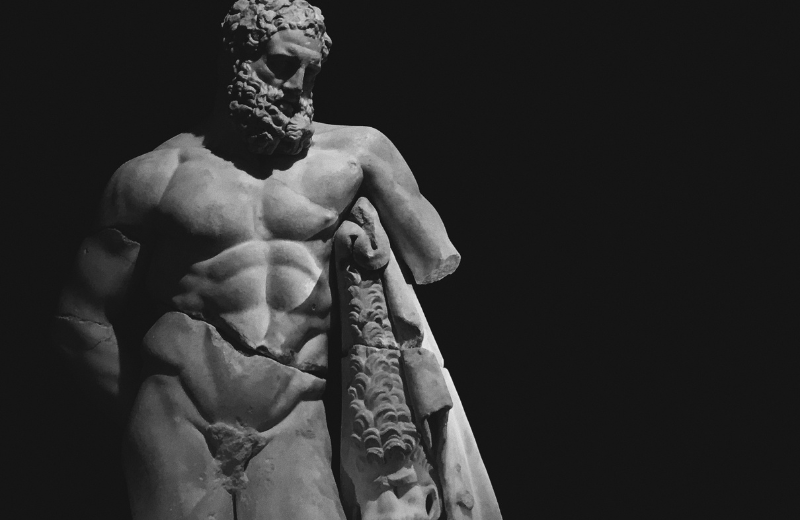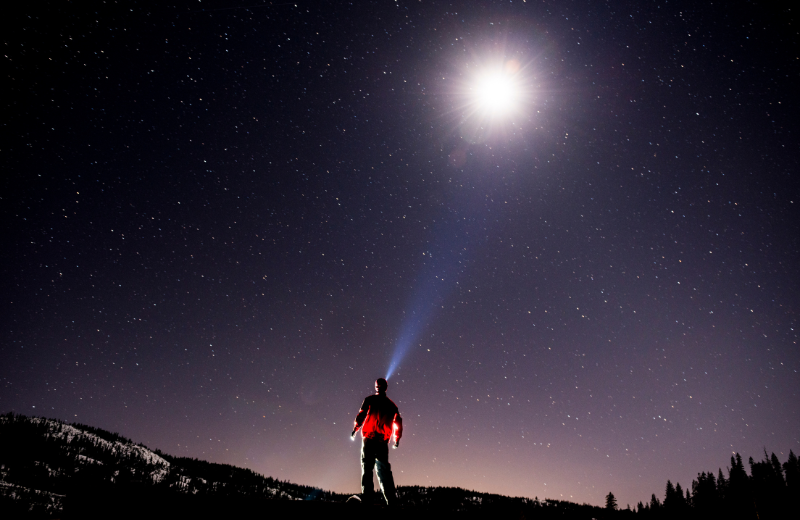Hercules is a fascinating constellation named after the famous hero from Greek mythology. In this guide, you’ll learn how to identify Hercules, explore its most notable stars, and uncover the myths and history that make this constellation truly special.
Jump to:
- What is the Hercules Constellation?
- What Does the Constellation Hercules Represent?
- What Does Hercules Look Like?
- How Far is the Hercules Constellation from Earth?
- The Hercules Constellation Myth
- Hercules' Stars
- Nebulae in the Hercules Constellation
- Finding Hercules in the Sky
- Fun Facts About Hercules
- Study Astronomy for £29
Recommended for you!
Best SellersWhat is the Hercules Constellation?
The Hercules constellation is one of the largest constellations in the northern hemisphere. It's not as immediately recognisable as the Big Dipper or Orion, but its sheer size and the stories connected to it make it one of the most interesting constellations to observe.
Hercules is named after the Greek mythological hero who performed 12 famous labours, and the constellation itself is often depicted as the hero kneeling in the sky, with a club in hand. Located in the northern hemisphere, Hercules spans a wide area and contains several fascinating celestial objects, including stars and clusters that are of great interest to astronomers and amateur stargazers.
What Does the Constellation Hercules Represent?

The constellation Hercules represents the mythological figure of Hercules, known for his extraordinary strength and heroic feats. In the night sky, Hercules is depicted as a kneeling figure, sometimes called the "Kneeling Giant." According to Greek mythology, the constellation represents the hero in his final triumph, having completed his labours and being immortalised among the stars.
Hercules is one of the oldest constellations known, having been recorded by ancient astronomers. Its symbolic meaning of strength, perseverance, and victory makes it stand out not just for its stars but also for the stories behind them.
What Does Hercules Look Like?
Although Hercules is one of the largest constellations, it can be a little tricky to spot because its stars are not as bright as those in other well-known constellations like Orion or the Big Dipper. To locate Hercules, you’ll need to focus on finding the keystone asterism, a quadrilateral of stars that forms the core of the constellation. Once you’ve spotted this shape, you can trace the remaining stars that form Hercules’ body.
How Far is the Hercules Constellation from Earth?
As with most constellations, the stars that make up Hercules are located at various distances from Earth. Constellations are visual groupings of stars that appear close to each other from our perspective, but in reality, the stars may be hundreds or even thousands of light-years apart.
For example, Zeta Herculis, one of the stars in the keystone, is about 35 light-years away from Earth, while some of the stars in the constellation are much farther. The stars in Hercules are spread across vast distances, yet from our vantage point, they come together to form this ancient pattern.
The Hercules Constellation Myth

The myth behind the Hercules constellation is rooted in ancient Greek mythology. Hercules, known for his incredible strength, is one of the most famous heroes in Greek legends. He was the son of Zeus and a mortal woman, and his life was marked by a series of challenging labours. His twelve labours were feats of strength and endurance, which he performed to atone for a tragic mistake caused by the wrath of the goddess Hera.
Hercules' Stars
The constellation Hercules contains several notable stars, with four standing out:
- Zeta Herculis: A binary star system located within the keystone asterism. Zeta Herculis is relatively close to Earth, at just 35 light-years away, and is a favourite target for amateur astronomers due to its prominent position in the easily recognisable keystone.
- Kornephoros (Beta Herculis): The brightest star in the Hercules constellation, Kornephoros is located about 139 light-years from Earth. Positioned at the hero's shoulder, it helps shape Hercules’ overall structure in the night sky.
- Delta Herculis: Another star in the keystone, Delta Herculis is around 75 light-years away. It’s a double star system, contributing to the pattern that makes Hercules easier to locate.
- Rasalgethi (Alpha Herculis): A red giant located at Hercules’ head, Rasalgethi is around 360 light-years from Earth. This variable star is known for its brightness fluctuations and adds to the constellation’s intrigue.
Nebulae in the Hercules Constellation
One of the most fascinating features of the Hercules constellation is the presence of a famous deep-sky object known as the Hercules Globular Cluster (M13). This massive cluster of stars contains hundreds of thousands of stars packed tightly together in a spherical shape. The Hercules cluster is a favourite among astronomers because it can be observed with a good pair of binoculars or a small telescope, appearing as a faint but beautiful patch of light in the night sky.
M13 is located about 22,000 light-years from Earth and is one of the brightest globular clusters visible from the northern hemisphere. If you’re interested in deep-sky objects, the Hercules Globular Cluster is an absolute must-see.
Finding Hercules in the Sky

To get a clear view of the Hercules constellation, it’s best to stargaze during the summer months in the northern hemisphere, particularly from June to September. During this time, Hercules is at its highest point in the sky, making it easier to spot.
Locating Hercules
Start by looking between the constellations Lyra and Corona Borealis. While Hercules doesn’t have the brightest stars, its distinctive keystone asterism is a helpful guide. This quadrilateral shape forms the core of the constellation and is key to identifying Hercules. Once you locate the keystone, you can trace the rest of Hercules’ body stretching out from it.
If you’re having difficulty spotting Hercules, using a star map or a stargazing app can be incredibly useful. These tools will help you navigate the sky and locate the keystone, even if light pollution makes the stars harder to see.
Viewing Hercules with Binoculars or a Telescope
- With binoculars: Hercules’ stars may be faint, especially in areas with light pollution. Binoculars can help make the keystone shape more visible and allow you to appreciate the cluster of stars that form the constellation.
- With a telescope: One of the real highlights of Hercules is the Hercules Globular Cluster (M13). Even with a small telescope, this stunning cluster of hundreds of thousands of stars appears as a bright, fuzzy ball and is a must-see for astronomy enthusiasts.
Best Viewing Conditions
For the best experience, find a dark location away from city lights. A clear, moonless night is ideal, as it will help you see Hercules in all its detail. Once you locate the keystone, the rest of the constellation will fall into place, and you’ll be able to appreciate the mythological hero shining above.
Recommended for you!
Best SellersFun Facts About Hercules
- Hercules is one of the largest constellations in the night sky, covering an area of 1,225 square degrees.
- The Hercules Globular Cluster (M13) is one of the best-known star clusters and can be seen with the naked eye in good conditions.
- Hercules contains 14 stars with confirmed planets orbiting them, making it an exciting target for those interested in exoplanet research.
- Zeta Herculis is a binary star system and part of the keystone, one of the key features of the constellation.
- Despite being a large constellation, Hercules’ stars are relatively faint, making it harder to identify compared to more prominent constellations.
Study Astronomy for £29
If the Hercules constellation has sparked your curiosity, why not explore more about the stars and the cosmos with our Astronomy Diploma Course at Centre of Excellence? This course offers a detailed understanding of the universe, from constellations and star types to the fundamentals of space observation. Perfect for all budding astronomers, the course is available for a discounted price of £29.













